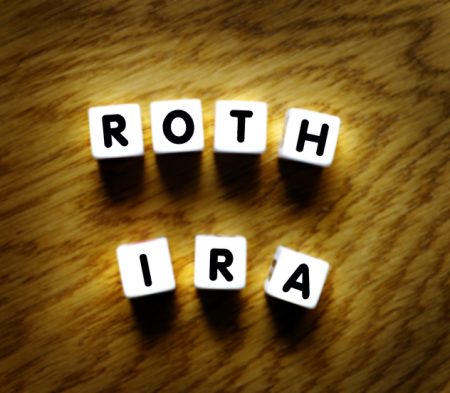Reinvesting a required minimum distribution (RMD) into a Roth IRA isn’t allowed directly, since RMDs are considered taxable income. However, if you have earned income and fall within the IRS income limits for Roth contributions, you can contribute to a Roth IRA using funds from any source—including money withdrawn to satisfy your RMD.
RMDs can potentially push you into a higher tax bracket. Work with a financial advisor to develop a tax strategy for managing these required withdrawals.
What Are RMDs and How Do They Work?
RMDs are mandatory withdrawals from certain tax-advantaged retirement accounts that account holders must take once they reach a specified age. As of 2025, individuals generally must begin taking RMDs at age 73 (75 for those born in 1960 or later). The IRS imposes these withdrawals to eventually collect taxes on money permitted to grow tax-deferred.
The amount of each RMD is based on the account balance at the end of the previous year and a life expectancy factor published by the IRS. The calculation resets annually. It’s necessary to complete for each account subject to RMD rules, though individuals with multiple IRAs may aggregate their RMDs. Failing to take an RMD can result in a steep penalty—currently 25% of the amount not withdrawn, reduced to 10% if corrected on time.
RMDs apply only to pre-tax retirement accounts, such as traditional IRAs, 401(k)s and 403(b)s. Roth IRAs, for example, are not subject to RMDs during the original owner’s lifetime.
While you cannot roll RMDs directly rolled into a Roth IRA, there are ways to move equivalent funds into a Roth—if you meet specific requirements. Understanding how this works requires looking at Roth contribution rules, income limits and the concept of earned income. Once you take your RMD, that money is yours to use however you like, including making a Roth IRA contribution. The key limitation is that you can only make Roth IRA contributions with earned income, such as wages, salaries or self-employment income. Passive income, pension payments and the RMD itself do not count as earned income. If you’re retired and no longer working, you likely won’t qualify to contribute to a Roth IRA. For example, say you’re 74 and earning $20,000 a year from part-time consulting work. You could contribute up to $8,000 to a Roth IRA in 2025 (the contribution limit for those 50 or older), as long as your income falls within the IRS limits. You could use funds from your RMD to contribute, since Roth IRA rules don’t require that the contribution comes directly from your paycheck—only that you have enough earned income to justify it. On the other hand, if you’re fully retired and your only income comes from Social Security and retirement account withdrawals, including RMDs, you wouldn’t be eligible to contribute to a Roth IRA. The IRS doesn’t consider those sources as earned income, which is a requirement for making new Roth contributions.
To indirectly reinvest RMD funds into a Roth IRA, you must first qualify to contribute to a Roth IRA. This entails meeting both the income thresholds and the contribution limits set by the IRS. The contribution limits in 2025 for both traditional and Roth IRAs are: These limits apply regardless of the source of the funds. Still, you must have earned income at least equal to the amount you contribute. So even if your RMD is $15,000, you can only contribute up to $8,000 if you’re 50 or over—and only if you have at least $8,000 in earned income. Additionally, to make the full allowed contribution, your modified adjusted gross income (MAGI) can’t exceed thresholds set by the IRS. If your MAGI falls within certain ranges, the amount you’re allowed to contribute begins to phase out. Once your income exceeds the upper limit, you can’t contribute to a Roth IRA directly. The following Roth IRA income limits apply for 2025: 2025 Roth IRA Income Limits These limits are important to note because RMDs count as taxable income and increase your MAGI. If your income is already close to the threshold, taking an RMD could push you over the limit. This would disqualify you from contributing to a Roth IRA, even if you have sufficient earned income. Planning, such as by reducing MAGI through charitable giving or qualified deductions, may help preserve eligibility in some cases. While RMDs are mandatory for most tax-deferred retirement accounts, some strategies can reduce or even eliminate them. These approaches generally involve account conversions, specific account types or qualified transfers. For instance, you may consider: No. You cannot roll over RMDs into a Roth IRA or any other retirement account. Once the money is withdrawn, it’s considered taxable income and is no longer eligible for rollover treatment. If you’re eligible to contribute to a Roth IRA, you can reinvest your RMD indirectly by using the withdrawn funds for a Roth contribution. To do so, however, you must have enough earned income and your income must fall within the IRS limits. Alternatively, you can invest the RMD in a taxable brokerage account. This avoids contribution limits, though taxes on dividends and capital gains may apply. One of the most common mistakes is failing to take the full RMD by the deadline. This can trigger a penalty equal to 25% of the amount not withdrawn, though that penalty may be reduced to 10% if corrected promptly. Misunderstanding which accounts require RMDs or how to aggregate them is another frequent error. You can’t roll an RMD directly into a Roth IRA. That said, it’s possible to contribute an equivalent amount if you have earned income and meet the IRS income limits. This approach won’t reduce your current tax bill, but it can shift future growth into a tax-free account. For retirees with qualifying income, it’s one way to extend the long-term benefits of money that you have to withdraw. Photo credit: ©iStock.com/AaronAmat, ©iStock.com/fizkes, ©iStock.com/SolStock Read the full article hereCan You Reinvest Your RMD into a Roth IRA?

Roth IRA Contribution and Income Limits 2025
Filing Status
MAGI for Full Contribution
MAGI for Partial Contribution
No Contribution
Single/Head of Household
Less than $150,000
$150,000-$165,000
$165,000 and over
Married Filing Jointly
Less than $236,000
$236,000–$246,000
$246,000 and over
Married Filing Separately
N/A
Up to $10,000
$10,000 and over
How to Avoid RMDs
Frequently Asked Questions
Can I roll over my RMD to a Roth?
What is the best way to reinvest my RMD?

What is the biggest RMD mistake?
Bottom Line
Tips for Retirement Planning









